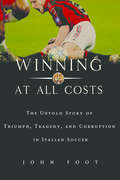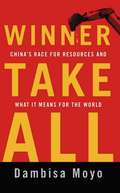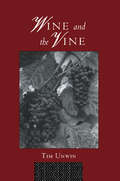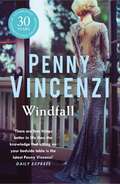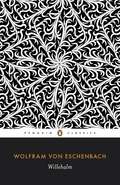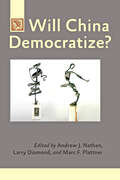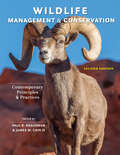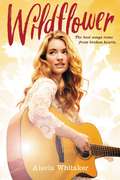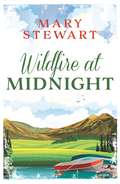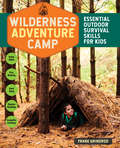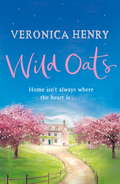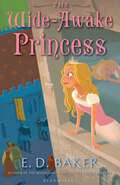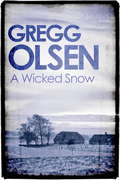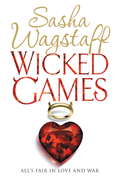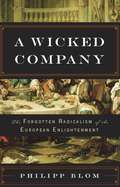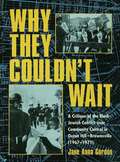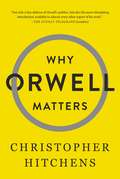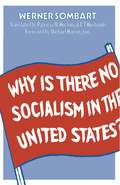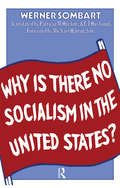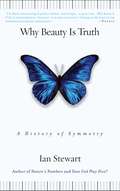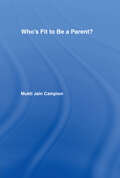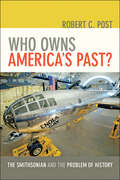- Table View
- List View
Winning at All Costs: A Scandalous History of Italian Soccer
by John FootThe 2006 World Cup final between Italy and France was a down-and-dirty game, marred by French superstar Zidane's head-butting of Italian defender Materazzi. But viewers were also exposed to the poetry, force, and excellence of the Italian game; as operatic as Verdi and as cunning as Machiavelli, it seemed to open a window into the Italian soul. John Foot's epic history shows what makes Italian soccer so unique. Mixing serious analysis and comic storytelling, Foot describes its humble origins in northern Italy in the 1890s to its present day incarnation where soccer is the national civic religion. A story that is reminiscent of Gangs of New York and A Clockwork Orange, Foot shows how the Italian game - like its political culture - has been overshadowed by big business, violence, conspiracy, and tragedy, how demagogues like Benito Mussolini and Silvio Berlusconi have used the game to further their own political ambitions. But Winning at All Costs also celebrates the sweet moments - the four World Cup victories, the success of Juventus, Inter Milan, AC Milan, the role soccer played in the resistance to Nazism, and the great managers and players who show that Italian soccer is as irresistible as Italy itself.
Winner Take All: China's Race for Resources and What It Means for the World
by Dambisa MoyoCommodities permeate virtually every aspect of modern daily living, but for all their importance-their breadth, their depth, their intricacies, and their central role in daily life-few people who are not economists or traders know how commodity markets work. Almost every day, newspaper headlines and media commentators scream warnings of impending doom--shortages of arable land, clashes over water, and political conflict as global demand for fossil fuels outstrips supply. The picture is bleak, but our grasp of the details and the macro shifts in commodities markets remain blurry.Winner Take All is about the commodity dynamics that the world will face over the next several decades. In particular, it is about the implications of China's rush for resources across all regions of the world. The scale of China's resource campaign for hard commodities (metals and minerals) and soft commodities (timber and food) is among the largest in history. To be sure, China is not the first country to launch a global crusade to secure resources. From Britain's transcontinental operations dating back to the end of the 16th century, to the rise of modern European and American transnational corporations between the mid 1860's and 1870's, the industrial revolution that powered these economies created a voracious demand for raw materials and created the need to go far beyond their native countries.So too is China's resource rush today. Although still in its early stages, already the breadth of China's operation is awesome, and seemingly unstoppable. China's global charge for commodities is a story of China's quest to secure its claims on resource assets, and to guarantee the flow of inputs needed to continue to drive economic development. Moyo, an expert in global commodities markets, explains the implications of China's resource grab in a world of diminishing resources.
Wine and the Vine: An Historical Geography of Viticulture and the Wine Trade
by Tim UnwinVery few books have products as diverse as those of the grape vine: even fewer have products with such a cultural significance. Wine and the Vine provides an introduction to the historical geography of viticulture and the wine trade from prehistory to the present. It considers wine as both a unique expression of the interaction of people in a particular environment, rich in symbol and meaning, and a commercial product of great economic importance to particular regions.
Windfall
by Penny VincenziPenny Vincenzi's WINDFALL is a rich, absorbing tale of temptation, ambition and desire for any reader of Elizabeth Buchan, Harriet Evans or Jilly Cooper. 'Reading her is an addictive experience' Elizabeth BuchanCassia Fallon has always been the perfect country doctor's wife, performing each menial task with willingness and grace, even though her desire to become a doctor herself has been thwarted by lack of money. Then her godmother leaves her a fortune. With her new-found wealth, Cassia is finally free to do as she pleases, and resumes her own medical career as Dr Cassia Tallow with a passion. But it soon becomes clear that her legacy may not be such a blessing after all, for Cassia begins to question the strength of her marriage, her future and exactly where the money has come from. a rich, absorbing tale of temptation, ambition and desire.
Willehalm: Text Und Übersetzung (De Gruyter Texte Ser. #108)
by Wolfram EschenbachWolfram von Eschenbach (fl. c. 1195-1225), best known as the author of Parzival, based Willehalm, his epic poem of military prowess and courtly love, on the style and subject matter of an Old French "chanson de geste." In it he tells of the love of Willehalm for Giburc, a Saracen woman converted to Christianity, and its consequences. Seeking revenge for the insult to their faith, her relatives initiate a religious war but are finally routed. Wolfram's description of the two battles of Alischanz, with their massive slaughter and loss of heroes, and of the exploits of Willehalm and the quasicomic Rennewart, well displays the violence and courtliness of the medieval knightly ideal. Wolfram flavors his brutal account, however, with tender scenes between the lovers, asides to his audience, sympathetic cameos of his characters--especially the women--and, most unusually for his time, a surprising tolerance for 'pagans'.
Will China Democratize? (A Journal of Democracy Book)
by Larry Diamond Andrew J. Nathan Marc F. PlattnerWhile China has achieved extraordinary economic success as it has moved toward open markets and international trade, its leadership maintains an authoritarian grip, repressing political movements, controlling all internet traffic, and opposing any democratic activity. Because of its huge population, more than half the people in the world who lack political freedom live in China. Its undemocratic example is attractive to other authoritarian regimes. But can China continue its growth without political reform? In Will China Democratize?, Andrew J. Nathan, Larry Diamond, and Marc F. Plattner present valuable analysis for anyone interested in this significant yet perplexing question.Since the Journal of Democracy’s very first issue in January 1990, which featured articles reflecting on the then-recent Tiananmen Square massacre, the Journal has regularly published articles about China and its politics. By bringing together the wide spectrum of views that have appeared in the Journal’s pages—from contributors including Fang Lizhi, Perry Link, Michel Oksenberg, Minxin Pei, Henry S. Rowen, and Nobel laureate Liu Xiaobo—Will China Democratize? provides a clear view of the complex forces driving change in China's regime and society.Whether China will democratize—and if so, when and how—has not become any easier to answer today, but it is more crucial for the future of international politics than ever before.
Will China Democratize? (A Journal of Democracy Book)
by Andrew J. Nathan Larry Diamond Marc F. PlattnerWhile China has achieved extraordinary economic success as it has moved toward open markets and international trade, its leadership maintains an authoritarian grip, repressing political movements, controlling all internet traffic, and opposing any democratic activity. Because of its huge population, more than half the people in the world who lack political freedom live in China. Its undemocratic example is attractive to other authoritarian regimes. But can China continue its growth without political reform? In Will China Democratize?, Andrew J. Nathan, Larry Diamond, and Marc F. Plattner present valuable analysis for anyone interested in this significant yet perplexing question.Since the Journal of Democracy’s very first issue in January 1990, which featured articles reflecting on the then-recent Tiananmen Square massacre, the Journal has regularly published articles about China and its politics. By bringing together the wide spectrum of views that have appeared in the Journal’s pages—from contributors including Fang Lizhi, Perry Link, Michel Oksenberg, Minxin Pei, Henry S. Rowen, and Nobel laureate Liu Xiaobo—Will China Democratize? provides a clear view of the complex forces driving change in China's regime and society.Whether China will democratize—and if so, when and how—has not become any easier to answer today, but it is more crucial for the future of international politics than ever before.
Wildlife Management and Conservation: Contemporary Principles and Practices
by Paul R. Krausman And James W. Cain IIIThe definitive textbook for students of wildlife management, now updated to cover the latest techniques, tools, and topics.Wildlife Management and Conservation presents a clear overview of the management and conservation of animals, their habitats, and how people influence both. The relationship among these three components of wildlife management is explained in chapters written by leading experts and is designed to prepare students for careers in which they will be charged with maintaining healthy animal populations. To be successful wildlife professionals, they will need to find ways to restore depleted populations, reduce overabundant, introduced, or pest species, and manage relationships among various human stakeholders. This book gives them the basic knowledge necessary to accomplish these goals.This second edition, which is updated throughout, features several new and expanded topics, including communication in the wildlife profession, fire science, Indigenous models of management and conservation, plant–animal interactions, quantitative analysis of wildlife populations, and a detailed glossary. The book also covers:• Human dimensions of wildlife management• Animal behavior• Predator–prey relationships• Structured decision making• Issues of scale in wildlife management• Wildlife health• Historical context of wildlife management and conservation• Hunting and trapping• Nongame species• Nutrition ecology• Water management• Climate change• Conservation planningThe most widely used foundational text in the field, this is the perfect resource not only for students but also for early career professionals and those in related fields who need to understand the core tenets and tools of wildlife conservation and management.Contributors: C. Jane Anderson, Bart M. Ballard, Warren B. Ballard, John A. Bissonette, Clint Boal, Scott B. Boyle, Leonard A. Brennan, Robert D. Brown, James W. Cain III, Tyler A. Campbell, Michael J. Cherry, Michael R. Conover, Daniel J. Decker, Randall W. DeYoung, Jonathan B. Dinkins, W. Sue Fairbanks, Selma N. Glasscock, James B. Grand, Michael J. Haney, James R. Heffelfinger, Scott E. Henke, Fidel Hernandez, Davie G. Hewitt, C. L. Hoving, David A. Jessup, Heather E. Johnson, Winifred B. Kessler, John L. Koprowski, Paul R. Krausman, William P. Kuvlesky, Jr., Roel R. Lopez, R. W. Mannan, Scott Mills, Michael S. Mitchell, Michael L. Morrison, Anna M. Muñoz, John F. Organ, Katherine L. Parker, William F. Porter, Shawn J. Riley, Steven S. Rosenstock, Michael C. Runge, Susan P. Rupp, William F. Siemer, Robert J. Steidl, Kelley M. Stewart
Wildlife Management and Conservation: Contemporary Principles and Practices
by Paul R. Krausman James W. CainThe definitive textbook for students of wildlife management, now updated to cover the latest techniques, tools, and topics.Wildlife Management and Conservation presents a clear overview of the management and conservation of animals, their habitats, and how people influence both. The relationship among these three components of wildlife management is explained in chapters written by leading experts and is designed to prepare students for careers in which they will be charged with maintaining healthy animal populations. To be successful wildlife professionals, they will need to find ways to restore depleted populations, reduce overabundant, introduced, or pest species, and manage relationships among various human stakeholders. This book gives them the basic knowledge necessary to accomplish these goals.This second edition, which is updated throughout, features several new and expanded topics, including communication in the wildlife profession, fire science, Indigenous models of management and conservation, plant–animal interactions, quantitative analysis of wildlife populations, and a detailed glossary. The book also covers:• Human dimensions of wildlife management• Animal behavior• Predator–prey relationships• Structured decision making• Issues of scale in wildlife management• Wildlife health• Historical context of wildlife management and conservation• Hunting and trapping• Nongame species• Nutrition ecology• Water management• Climate change• Conservation planningThe most widely used foundational text in the field, this is the perfect resource not only for students but also for early career professionals and those in related fields who need to understand the core tenets and tools of wildlife conservation and management.Contributors: C. Jane Anderson, Bart M. Ballard, Warren B. Ballard, John A. Bissonette, Clint Boal, Scott B. Boyle, Leonard A. Brennan, Robert D. Brown, James W. Cain III, Tyler A. Campbell, Michael J. Cherry, Michael R. Conover, Daniel J. Decker, Randall W. DeYoung, Jonathan B. Dinkins, W. Sue Fairbanks, Selma N. Glasscock, James B. Grand, Michael J. Haney, James R. Heffelfinger, Scott E. Henke, Fidel Hernandez, Davie G. Hewitt, C. L. Hoving, David A. Jessup, Heather E. Johnson, Winifred B. Kessler, John L. Koprowski, Paul R. Krausman, William P. Kuvlesky, Jr., Roel R. Lopez, R. W. Mannan, Scott Mills, Michael S. Mitchell, Michael L. Morrison, Anna M. Muñoz, John F. Organ, Katherine L. Parker, William F. Porter, Shawn J. Riley, Steven S. Rosenstock, Michael C. Runge, Susan P. Rupp, William F. Siemer, Robert J. Steidl, Kelley M. Stewart
Wildflower (Wildflower #1)
by Alecia WhitakerThe best songs come from broken hearts.Bird Barrett has grown up on the road, singing backup in her family's bluegrass band and playing everywhere from Nashville, Tennessee, to Nowhere, Oklahoma. But one fateful night, when Bird fills in for her dad by singing lead, a scout in the audience offers her a spotlight all her own.Soon Bird is caught up in a whirlwind of songwriting meetings, recording sessions, and music-video shoots. Her first single hits the top twenty, and suddenly fans and paparazzi are around every corner. She's even caught the eye of her longtime crush, fellow roving musician Adam Dean. With Bird's star on the rise, though, the rest of her life falls into chaos as tradition and ambition collide. Can Bird break out while staying true to her roots?In a world of glamour and gold records, a young country music star finds her voice.
Wildfire at Midnight: The classic thriller you will not be able to put down (Rediscovered Classics Ser.)
by Mary StewartThe tense, twisty murder mystery which will have you on the edge of your seat, from the original queen of romantic suspense 'Mary Stewart is magic' New York Times Following a heart-breaking divorce, Gianetta retreats to the Isle of Skye hoping to find tranquillity in the island's savage beauty. But shortly before her arrival a girl's body is found on the craggy slopes of the looming Blue Mountain, and with the murderer still on the loose, there's nothing to stop him from setting his sights on Gianetta next . . .Praise for Mary Stewart:'There are few to equal Mary Stewart' Daily Telegraph'One of the great British storytellers of the 20th century' Independent'A natural successor to Jane Austen and Charlotte Bronte' Guardian'Total heaven. I'd rather read her than most other authors' Harriet Evans'She set the benchmark for pace, suspense and romance - with a great dollop of escapism as the icing' Elizabeth BuchanWhat readers have said about Wildfire at Midnight:'Could not put the book down, from start to finish! Absolutely brilliant! A great writer. Thank you Mary Stewart''I've read and re-read it countless times . . . wonderful setting for the plot, evocative and captivating writing, I love this book''If you like a beautiful heroine with pluck, a handsome hero, danger and strong descriptive passages this is a book for you''A fabulous fast paced read . . . Stewart keeps you guessing to the very end with a doozy of a nail-biting finish set amongst the swirling mists, shifting bogs and the rocky crags of the Cuillin'
Wilderness Adventure Camp: Essential Outdoor Survival Skills for Kids
by Frank GrindrodThis hands-on guidebook teaches kids aged 10 and up essential outdoor camping and survival skills, with step-by-step photos for how to build a fire, pick a campsite, make a lean-to, use a knife, cook over an open fire, and more.
Wild Oats
by Veronica HenryBefore THE BEACH HUT ... enjoy WILD OATSJamie Wilding's return home is not quite going to plan. A lot has changed in the picturesque Shropshire village of Upper Faviell since she left after the death of her mother. Her father is broke and behaving like a teenager. Her best friend's marriage is slowly falling apart. And the man she lost her heart to years ago is trying to buy her beloved family home.As Jamie attempts to fix the mess, she is forced to confront a long-standing family feud and the truth about her father, before she can finally listen to her own heart.
The Wide-Awake Princess: A Tale Of The Wide-awake Princess (The Wide-Awake Princess #1)
by E. D. BakerE.D. Baker pulls out all the stops in this brilliant version of a classic tale. It's a little known fact that Sleeping Beauty's younger sister, Annie, is the one who must save the day and rescue her from the evil curse. Annie is impervious to ALL magic - good and bad - and is the only one left awake when her sister pricks that finger. She sets off through the kingdom to find her sister's true love, the only person who can wake her and reverse the spell. Annie is joined by a handsome prince in disguise as she tackles Hansel and Gretel (and their witch), and many other fabulously familiar fairytale characters. Full of Baker's trademark humour, plot twists, and with a funny and strong female lead, this will charm fans of The Frog Princess, and bring in many new ones.
A Wicked Snow
by Gregg OlsenHannah Griffin was a girl when tragedy struck on her family's farm. She still remembers the flames reflected against the newly fallen snow and the bodies the police dug upone of them her mother's. It was the nation's worst murder scene in decades and the killer was never found. Two decades later Hannah is a CSI investigating a case of child abuse when the past comes hurtling back. Years of buried questions are brought to life. A killer with unfinished business is on the hunt. And an anonymous message turns Hannah's blood cold: Your Mom called...Praise for Gregg Olsen: 'Olsen will have you on the edge of your seat' Lee Child 'Wickedly clever... twisted' Lisa Gardner 'Olsen is a top-notch writer' Michael Connelly 'Olsen keeps the tension taut and pages turning' Publishers Weekly
Wicked Games: A racy, romantic romp you won’t want to put down
by Sasha WagstaffAll's fair in love and war... Sasha Wagstaff explores feuding families, star-crossed lovers, sex, scandal and secrets in her sensational read Wicked Games. The perfect read for fans of Cathy Bramley and Lucy Diamond.Debonair and dynamic, millionaire Judd Harrington is back at Brockett Hall. With his socialite wife and family in tow, he's returned from LA a glittering success. But as he stares across the valley at Lochlin Maguire's beautiful country house, all he can think of is revenge.Meanwhile Judd's arch-rival has troubles of his own. Lochlin's record label is losing major talent to an unknown competitor, his wife Tavvy is distracted and he can't seem to see eye to eye with his son Shay. And, unbeknownst to Lochlin, his talented singer daughter Iris has fallen for irresistible racing driver Ace Harrington out in LA. Ace is under orders from Judd to break Iris's heart. What he hadn't bargained for was losing his own in the process. Can he go against his father's wishes? Or will Judd's wicked games ruin love's young dream?What readers are saying about Wicked Games:'The characters are so real - you love to love some of them and love to hate others''I absolutely loved this book and found it gripping from end to end''Romance, revenge and glamour, what more could one ask for in a book'
A Wicked Company: The Forgotten Radicalism of the European Enlightenment
by Philipp BlomThe flourishing of radical philosophy in Baron Thierry Holbach's Paris salon from the 1750s to the 1770s stands as a seminal event in Western history. Holbach's house was an international epicenter of revolutionary ideas and intellectual daring, bringing together such original minds as Denis Diderot, Laurence Sterne, David Hume, Adam Smith, Ferdinando Galiani, Horace Walpole, Benjamin Franklin, Guillaume Raynal, and Jean-Jacques Rousseau.In A Wicked Company, acclaimed historian Philipp Blom retraces the fortunes of this exceptional group of friends. All brilliant minds, full of wit, courage, and insight, their thinking created a different and radical French Enlightenment based on atheism, passion, reason, and truly humanist thinking. A startlingly relevant work of narrative history, A Wicked Company forces us to confront with new eyes the foundational debates about modern society and its future.
Why They Couldn't Wait: A Critique of the Black-Jewish Conflict Over Community Control in Ocean-Hill Brownsville, 1967-1971
by Jane Anna GordonExamining the infamous conflict between a predominantly black community and a predominantly Jewish teachers' union, Gordon takes a new look at this historically rich and racially diverse community.
Why Orwell Matters
by Christopher Hitchens"Hitchens presents a George Orwell fit for the twenty-first century." --Boston GlobeIn this widely acclaimed biographical essay, the masterful polemicist Christopher Hitchens assesses the life, the achievements, and the myth of the great political writer and participant George Orwell. True to his contrarian style, Hitchens is both admiring and aggressive, sympathetic yet critical, taking true measure of his subject as hero and problem. Answering both the detractors and the false claimants, Hitchens tears down the façade of sainthood erected by the hagiographers and rebuts the critics point by point. He examines Orwell and his perspectives on fascism, empire, feminism, and Englishness, as well as his outlook on America, a country and culture toward which he exhibited much ambivalence. Whether thinking about empires or dictators, race or class, nationalism or popular culture, Orwell's moral outlook remains indispensable in a world that has undergone vast changes in the seven decades since his death. Combining the best of Hitchens' polemical punch and intellectual elegance in a tightly woven and subtle argument, this book addresses not only why Orwell matters today, but how he will continue to matter in a future, uncertain world.
Why is There No Socialism In the United States
by Werner SombartWhy is the United States the only advanced capitalist country with no labor party? This question is one of the great enduring puzzles of American political development, and it lies at the heart of a fundamental debate about the nature of American society. Tackling this debate head-on, Robin Archer puts forward a new explanation for why there is no American labor party-an explanation that suggests that much of the conventional wisdom about "American exceptionalism" is untenable. Conventional explanations rely on comparison with Europe. Archer challenges these explanations by comparing the United States with its most similar New World counterpart-Australia. This comparison is particularly revealing, not only because the United States and Australia share many fundamental historical, political, and social characteristics, but also because Australian unions established a labor party in the late nineteenth century, just when American unions, against a common backdrop of industrial defeat and depression, came closest to doing something similar. Archer examines each of the factors that could help explain the American outcome, and his systematic comparison yields unexpected conclusions. He argues that prosperity, democracy, liberalism, and racial hostility often promoted the very changes they are said to have obstructed. And he shows that it was not these characteristics that left the United States without a labor party, but, rather, the powerful impact of repression, religion, and political sectarianism.
Why Beauty Is Truth: The History of Symmetry
by Ian StewartAt the heart of relativity theory, quantum mechanics, string theory, and much of modern cosmology lies one concept: symmetry. In Why Beauty Is Truth, world-famous mathematician Ian Stewart narrates the history of the emergence of this remarkable area of study. Stewart introduces us to such characters as the Renaissance Italian genius, rogue, scholar, and gambler Girolamo Cardano, who stole the modern method of solving cubic equations and published it in the first important book on algebra, and the young revolutionary Evariste Galois, who refashioned the whole of mathematics and founded the field of group theory only to die in a pointless duel over a woman before his work was published. Stewart also explores the strange numerology of real mathematics, in which particular numbers have unique and unpredictable properties related to symmetry. He shows how Wilhelm Killing discovered "Lie groups” with 14, 52, 78, 133, and 248 dimensions-groups whose very existence is a profound puzzle. Finally, Stewart describes the world beyond superstrings: the "octonionic” symmetries that may explain the very existence of the universe.
Why Beauty Is Truth: The History of Symmetry
by Ian StewartAt the heart of relativity theory, quantum mechanics, string theory, and much of modern cosmology lies one concept: symmetry. In Why Beauty Is Truth, world-famous mathematician Ian Stewart narrates the history of the emergence of this remarkable area of study. Stewart introduces us to such characters as the Renaissance Italian genius, rogue, scholar, and gambler Girolamo Cardano, who stole the modern method of solving cubic equations and published it in the first important book on algebra, and the young revolutionary Evariste Galois, who refashioned the whole of mathematics and founded the field of group theory only to die in a pointless duel over a woman before his work was published. Stewart also explores the strange numerology of real mathematics, in which particular numbers have unique and unpredictable properties related to symmetry. He shows how Wilhelm Killing discovered "Lie groups" with 14, 52, 78, 133, and 248 dimensions-groups whose very existence is a profound puzzle. Finally, Stewart describes the world beyond superstrings: the "octonionic" symmetries that may explain the very existence of the universe.
Who's Fit to be a Parent?
by Mukti Jain CampionIn recent years the notion of parenting and parenthood have increasingly come under examination from the media and professionals and, in particular, government and politicians. More and more, parents are being held to account by society for their failure to deliver the sort of citizens it wants. But what are parents supposed to be doing? Are there some people that are inherently unfit to be parents and does there exist a body of knowledge that defines fit parenting? Who's fit to be a parent? covers this highly topical and important subject in a stimulating and accessible way that cuts across numerous professional disciplines and opens up the boundaries between professional and personal expertise on parenting. It is essential reading for any professional or student of social work and social policy, those working in the voluntary services concerned with the family, social policy makers and for anyone interested in understanding what it means to be a parent today.
Who Owns America's Past?: The Smithsonian and the Problem of History
by Robert C. PostIn 1994, when the National Air and Space Museum announced plans to display the Enola Gay, the B-29 sent to destroy Hiroshima with an atomic bomb, the ensuing political uproar caught the museum's parent Smithsonian Institution entirely unprepared. As the largest such complex in the world, the Smithsonian cares for millions of objects and has displayed everything from George Washington's sword to moon rocks to Dorothy’s ruby slippers from The Wizard of Oz. Why did this particular object arouse such controversy? From an insider’s perspective, Robert C. Post’s Who Owns America’s Past? offers insight into the politics of display and the interpretation of history.Never before has a book about the Smithsonian detailed the recent and dramatic shift from collection-driven shows, with artifacts meant to speak for themselves, to concept-driven exhibitions, in which objects aim to tell a story, displayed like illustrations in a book. Even more recently, the trend is to show artifacts along with props, sound effects, and interactive elements in order to create an immersive environment. Rather than looking at history, visitors are invited to experience it.Who Owns America’s Past? examines the different ways that the Smithsonian’s exhibitions have been conceived and designed—whether to educate visitors, celebrate an important historical moment, or satisfy donor demands or partisan agendas. Combining information from hitherto-untapped archival sources, extensive interviews, a thorough review of the secondary literature, and considerable personal experience, Post gives the reader a behind-the-scenes view of disputes among curators, academics, and stakeholders that were sometimes private and at other times burst into headline news.
